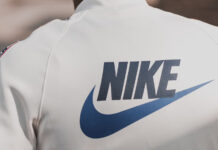In today’s digital era, every industry is leveraging personal data to drive better decision-making, enhance customer experience, and innovate solutions. The textile industry is no exception. From personalized fashion suggestions to efficient supply chain management, data plays a key role in shaping the future of textiles. Whether you’re a fashion retailer, a textile manufacturer, or a B2B service provider, understanding how personal data is being used in this industry can empower your business to stay ahead of the curve. This article explores how personal data is reshaping the textile industry, supported by real-life examples and case studies.
1. Personalization in Fashion: A Game-Changer
One of the most impactful uses of personal data in textiles is the ability to personalize products for customers. In an age where consumers desire individuality, personal data helps brands create tailored experiences.
Example: Levi’s and AI-Driven Customization Levi Strauss, the global denim brand, harnesses customer data to offer AI-powered customization for its jeans. By collecting data related to customer preferences like fit, fabric, and styling, Levi’s enables customers to design their own jeans. This personalized product experience has not only increased customer satisfaction but also boosted sales. According to market reports, companies that use personalized data are 20% more likely to increase their market share.
Similarly, Stitch Fix, an online personal styling service, uses data science to provide recommendations for clothing styles based on individual preferences. Stitch Fix gathers information such as body measurements, style choices, and customer feedback to deliver “hand-picked” clothing to their customers’ doorsteps, improving retention and revenue.
2. Predicting Trends with Big Data
The use of personal data also helps textile companies predict fashion trends. What’s trending on social media today might reflect demand in the market tomorrow. By analyzing consumer behavior and their digital footprints, brands can stay ahead.
Example: Zara’s Data-Driven Trend Forecasting Zara, a leader in fast fashion, excels at utilizing personal data to predict trends. The company relies on real-time customer feedback from its stores and online platforms. Store managers report daily on what customers ask for, be it a specific print, color, or size. This data feeds into Zara’s production process, enabling the brand to design, manufacture, and deliver trendy items faster than competitors. By transforming customer feedback into actionable insight, Zara has reduced its production cycle to just weeks, making it one of the most agile players in the textile industry.
3. Enhancing Customer Experience with AR and VR
Retailers in the textile industry are increasingly using personal data to enhance the customer experience with augmented reality (AR) and virtual reality (VR). These technologies rely on data like body measurements, shopping preferences, and purchase history to create engaging customer experiences.
Example: Nike and Virtual Try-Ons Nike has implemented AR tools to allow customers to virtually try on shoes. By using personal data like foot size and shape (measured through smartphone cameras), Nike combines analytics with AR to recommend the perfect fit and style. This approach not only improves customer satisfaction but also reduces product returns—a major issue in the e-commerce segment of the textile industry.
Similarly, H&M has piloted virtual fitting rooms that allow customers to see how garments look and fit on their virtual avatars. These avatars are created using personal measurements collected from customers. By using these tools, H&M is working toward a seamless and personalized shopping experience.
4. Sustainability Efforts: Using Data to Reduce Waste
Sustainability is a growing concern in the textile industry, and personal data is being leveraged to address it. By analyzing consumer buying habits and preferences, brands can design and produce items in smaller, more targeted batches, thereby reducing overproduction and waste.
Example: Adidas and the Parley Initiative Adidas, in partnership with Parley for the Oceans, has developed sustainable textiles made from ocean plastic waste. By analyzing customer data, Adidas discovered that sustainability is a priority for a considerable portion of their customer base. This insight has led them to produce eco-friendly collections like their “Parley” shoes, which align with customer values while also tackling environmental concerns.
Additionally, brands like Patagonia use personal data to encourage customers to repair their old garments instead of buying new ones. By tracking purchase history and offering repair guides, Patagonia aligns customer behavior with sustainable practices.
5. Data-Driven Supply Chain Efficiency
The textile supply chain is a complex network involving raw material suppliers, manufacturers, distributors, and retailers. Personal data is being used to improve supply chain transparency and efficiency.
Example: Blockchain in Textile Supply Chains Blockchain technology, combined with personal data, is increasingly used in the textile industry to ensure traceability. For example, brands like Everlane provide customers with detailed information about the production journey of a garment—from raw material sourcing to the final product. By using personal purchase data and blockchain, Everlane enhances trust and transparency, which are critical for today’s conscious consumers.
Personal data is also used to predict demand patterns, helping manufacturers prevent overproduction or underproduction. For instance, Uniqlo uses advanced analytics based on customer data to optimize inventory levels, ensuring the right products are available at the right time.
6. Challenges and Ethical Concerns
While the use of personal data has undeniable benefits, it also raises ethical concerns. Issues like data privacy, security breaches, and the risk of over-surveillance must be carefully addressed.
Example: GDPR and Fashion Retailers The General Data Protection Regulation (GDPR) in Europe has set stringent guidelines on how personal data can be collected and used. Companies like H&M have faced fines for mishandling employee and customer data. This highlights the importance of ensuring transparency and compliance while using personal data in the textile industry.
Brands must strike a balance between leveraging data for innovation and ensuring the privacy and rights of their customers. Investing in secure data systems and clear communication can help build trust.
Conclusion: Personal Data as a Catalyst for Growth
Personal data is revolutionizing the textile industry by enabling personalization, improving supply chain efficiency, driving sustainability, and enhancing customer experiences. From pioneers like Levi’s and Zara to sustainability champions like Adidas, real-life examples demonstrate the transformative power of data.
However, businesses must use this data responsibly, striking a balance between innovation and ethics. For B2B players in the textile sector, adopting data-driven technologies while staying compliant with legal norms can open up new opportunities for growth. As the industry evolves, one thing is clear: personal data isn’t just shaping the textile industry—it’s weaving the fabric of its future.






























